25+ Sample Employee Evaluation In
-
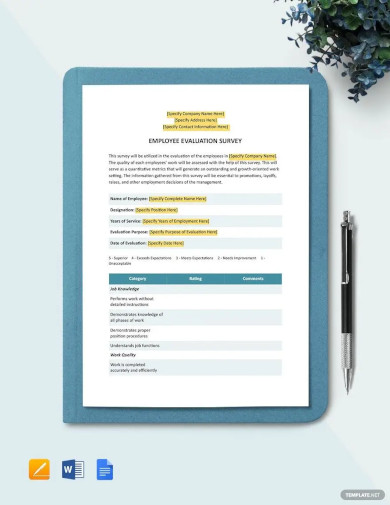
Employee Evaluation Survey Template
download now -
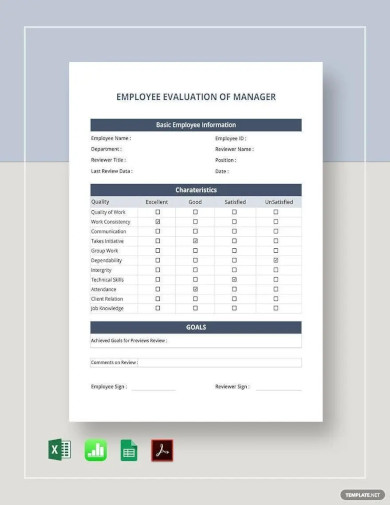
Employee Evaluation of Manager Template
download now -
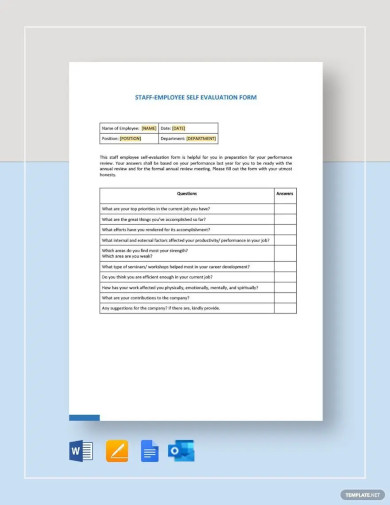
Staff Employee Self-Evaluation Template
download now -
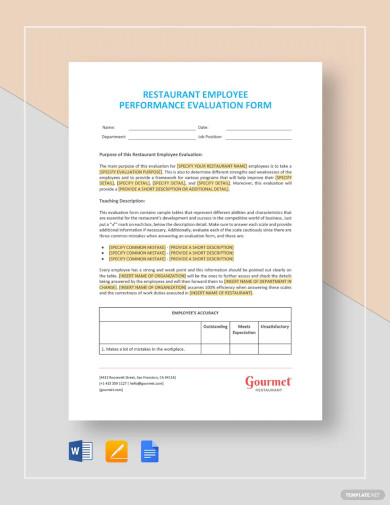
Restaurant Employee Performance Evaluation Form Template
download now -
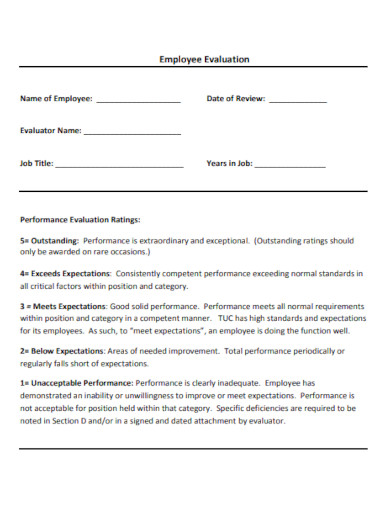
Employee Evaluation
download now -
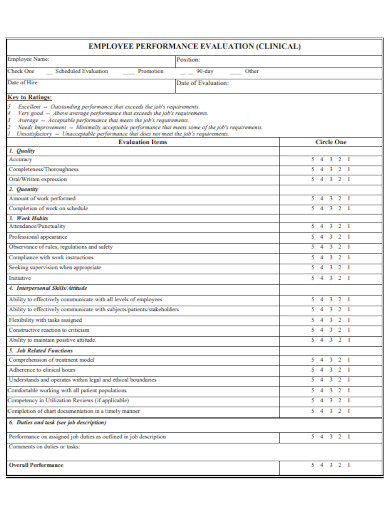
Employee Performance Evaluation
download now -
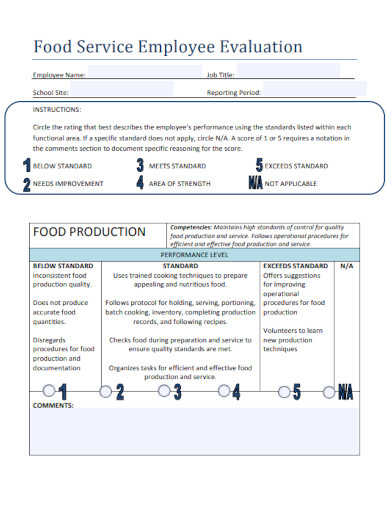
Food Service Employee Evaluation
download now -

Employee Evaluation Process
download now -
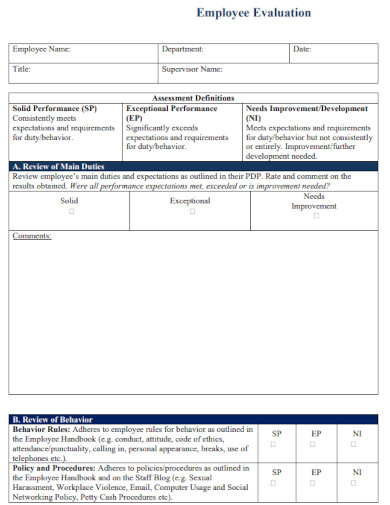
Department Employee Evaluation
download now -
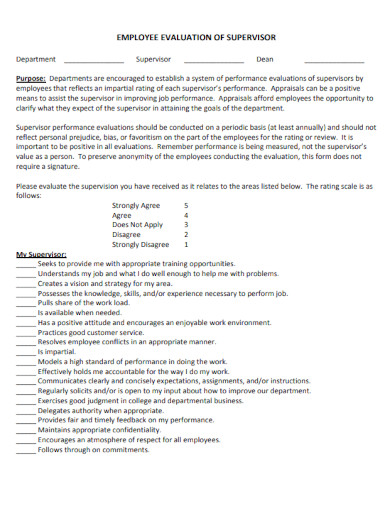
Employee Evaluation of Supervisor
download now -
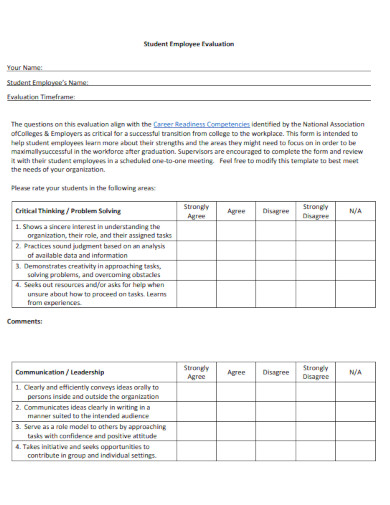
Student Employee Evaluation
download now -
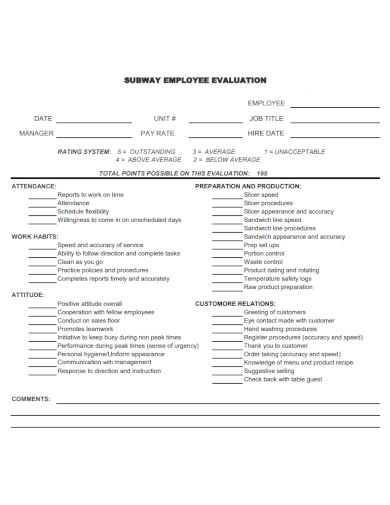
Subway Employee Evaluation
download now -
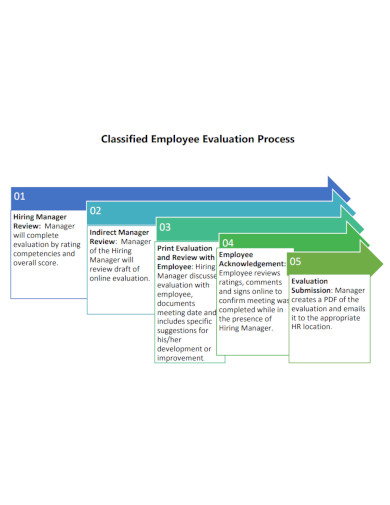
Classified Employee Evaluation Process
download now -
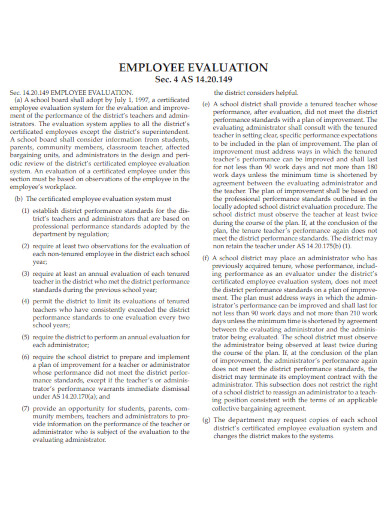
Employee Evaluation Document
download now -
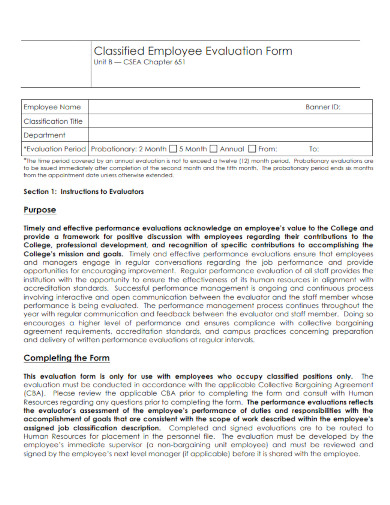
Classified Employee Evaluation Form
download now -
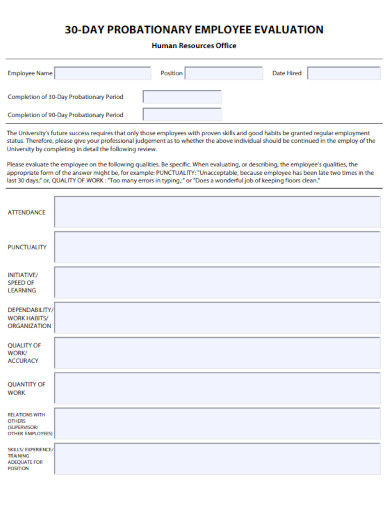
30-Day Probationary Employee Evaluation
download now -
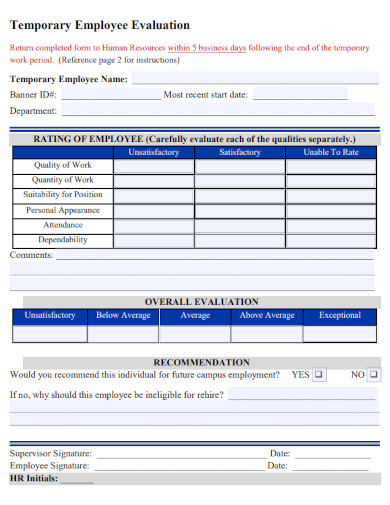
Temporary Employee Evaluation
download now -
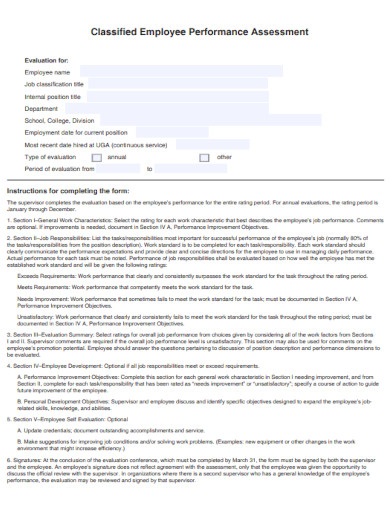
Classified Employee Performance Assessment
download now -
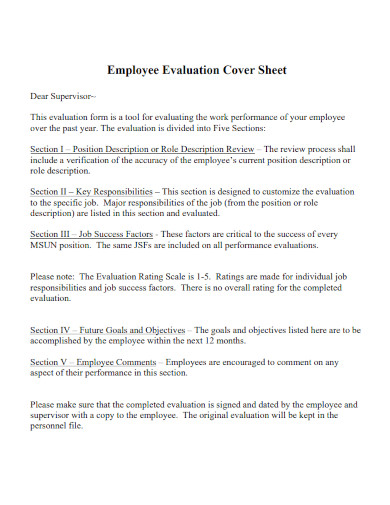
Employee Evaluation Cover Sheet
download now -
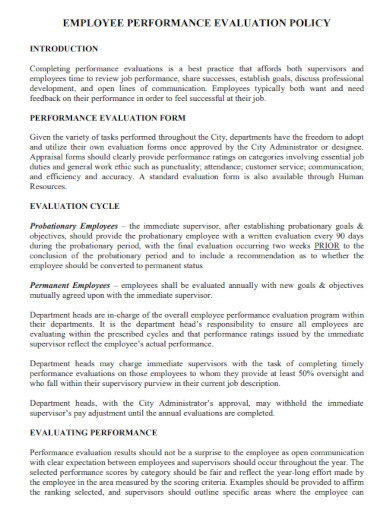
Employee Performance Evaluation Policy
download now -
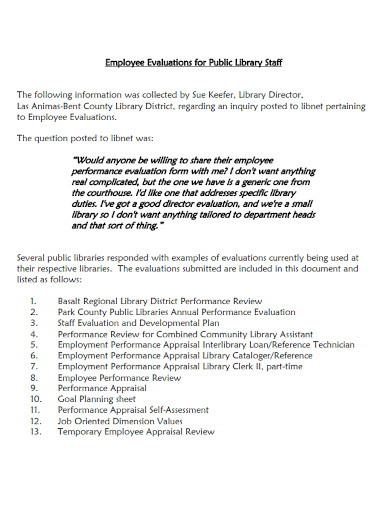
Employee Evaluations for Public Library Staff
download now -
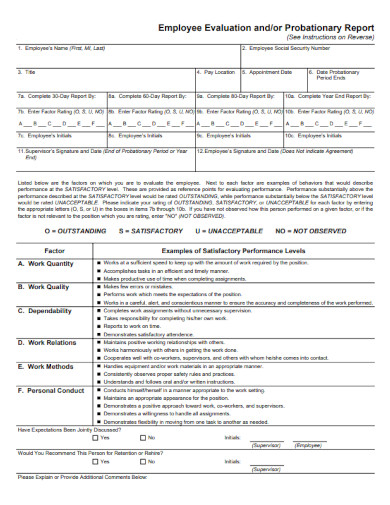
Employee Evaluation Probationary Report
download now -
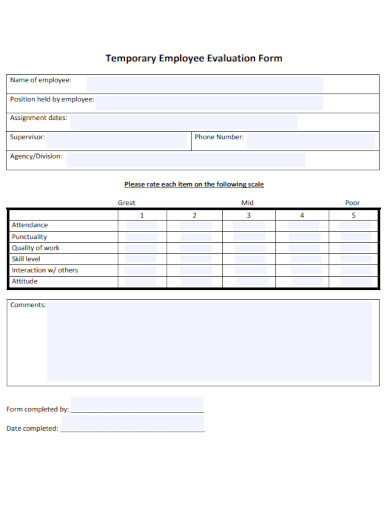
Temporary Employee Evaluation Form
download now -
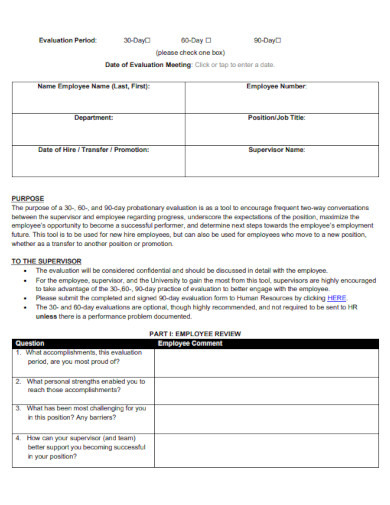
30-60-90-Day Employee Performance Evaluation
download now -
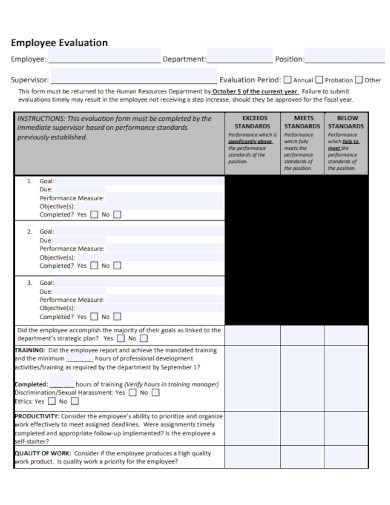
Printable Employee Evaluation
download now -
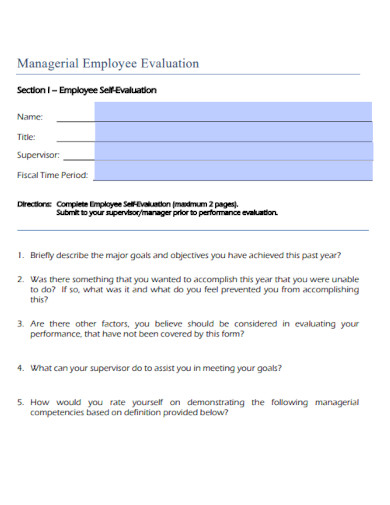
Managerial Employee Evaluation
download now
What Is an Employee Evaluation?
Managers and human resource departments use employee evaluations to assess an employee’s performance over a specified time. Frequently, employee evaluations include information about productivity, attitude, punctuality, and goal attainment. When properly utilized to educate and reward employees, employee evaluations can positively affect all aspects of the business. A worker’s job performance is evaluated and assessed in an employee evaluation. Most companies have an employee evaluation system in which employees are frequently considered. Suppose your company does this and evaluates employees based on their service anniversary. In that case, employees hired at the end of the year receive disproportionately higher raises than their colleagues. This occurs when managers either spend too much of their raised budget early in the year or save it all until the end of the year when they must use it or lose it.
Benefits of Employee Evaluation
Many companies will soon conduct employee performance reviews at this time of year. Whether your performance review cycle is monthly, quarterly, or biannual, it’s almost time to check in with your staff. However, performance reviews can be distressing for all parties involved and only sometimes produce the desired result. Only 14% of employees believe that performance evaluations motivate them to develop. Before the next review cycle, you should review the main advantages of the employee performance evaluation. Then you can approach this review period optimistically, prepared to give your employees more autonomy.
How to Write an Employee Evaluation
Many businesses have templates for these evaluations, but most adhere to a similar format. Managers are typically required to comment or use a rating system to rank their team members’ abilities to perform specific tasks and acquire particular skills during employee evaluations. These evaluations also require managers to describe employee contributions and improvement areas. Companies of all sizes typically conduct annual employee evaluations during their year-end review procedure. Sometimes, a manager will provide an assessment following an employee’s employment anniversary. Feedback evaluations frequently determine whether a team member will be promoted or receive a pay increase. These methods can be followed to create a practical employee evaluation:
1. Examine the Worker’s Employment Description
Review the current job description and requirements for each employee. After working closely with them, you may have adjusted your expectations based on each team member’s typical performance and abilities. Rereading the job descriptions of each team member will provide context for your review of their original expected responsibilities. Consider how well your team members perform their duties and meet the position’s requirements as you read job descriptions. Notate what each team member does well, where they could develop, and when they exceed expectations. Utilize these notes to structure your evaluation remarks.
2. Identify Areas for Enhancement
If you have worked with a team member for more than one review cycle, locate their evaluations from the previous year. Reread each one attentively to remind yourself of the past performance of your team members. Notate the issues they needed to address and the improvement areas you suggested. Consider the development of your team members throughout the year. Highlight the places where they’ve made progress, and be as specific as feasible. Include such information in your employee evaluations if your team members have acquired new skills, completed training, or earned certifications. Attempt to recall the entire year’s work to produce a comprehensive and exhaustive evaluation that includes all the progress.
3. Compare Advantages and Disadvantages
Using previous evaluations and job descriptions, list each team member’s assets and weaknesses. Consider utilizing a SWOT analysis to guide this section of the employee evaluation notes. Consider first one’s strengths, which include positive characteristics, significant accomplishments, and areas of expertise. Then, note the team members’ weaknesses, including any factors that prevent them from attaining their objectives. Third, consider opportunities for your team’s performance to excel. Finally, describe potential hazards that could negatively affect their performance. As you conduct this SWOT analysis, collect evidence to support your assertions. You’ll need attendance and sales figures to demonstrate employees’ ability to contribute to the organization. Since your evaluation can affect the power of your team members to advance their careers, you will want to ensure that your assessments are as accurate as feasible.
4. Recommend Attainable Objectives
In addition to influencing annual raises and promotion opportunities, employee evaluations can help your team members plan for the upcoming year. Consider how you can empower your team members to improve their performance and grow their careers as you compose employee evaluations. Consider the job descriptions of your team members, their past performance, and your company’s strategic plan when determining objectives for the upcoming year. Individual employees, the team as a whole, and the organization will benefit from the goals you suggest. Establishing SMART objectives can be helpful. By setting specific, measurable, actionable, pertinent, and time-bound objectives, you can assist your team in achieving tremendous success.
5. Provide Constructive Feedback
Typically, your team members will have skills and areas they can develop. Consistently provide positive feedback in your evaluations. If you mention a site or skill your team members have not yet mastered, suggest a tactic to help them progress in that area or skill. By providing constructive criticism, you will provide actionable advice to your team members while composing objective performance evaluations.
FAQs
How can employees improve their skills?
Direct employees, assign them to groups, assist them in completing tasks list more effectively, and monitor their work regularly to measure improvement levels and identify flaws. Mentor employees for high-level responsibilities and allow them to utilize their creativity to conduct skill-based work. A high-potential employee possesses the capacity, character, and motivation to become a future catalytic leader, as well as the ability and aspiration to occupy successive leadership positions within the organization. The ratio of high potential employees to total employees is between 3 and 5 percent.
What should employee comments on performance review?
Communication, collaboration, dependability, work quality, problem-solving, and punctuality should all be addressed in employee performance reviews. Give consistent informal feedback regularly. Be sincere, engage in face-to-face conversations, provide pertinent examples, and end when conducting formal investigations. 69% of workers say they would work harder if they believed their efforts were being acknowledged through feedback. At least once per week, 43% of highly engaged employees receive feedback. 98% of workers become disengaged when they receive little or no input.
What makes a good evaluation?
A quality evaluation summarizes the findings and provides a distinct diagnosis supported by evidence. It should describe the problem’s scope, emphasize relevant skills, and reasonably estimate the outcome. Any negative or positive emotional or social factors must also be addressed. Employee evaluations are essential to the process of managing employees. They provide a documented history of an employee’s job performance and are used to identify employee development plans and establish goals for future growth.
As emphasized throughout this article, there are a variety of employee evaluation assessments and templates available for HR professionals to utilize and adapt to their organization’s specific and diverse requirements. You play a crucial role in determining the most appropriate assessment method, which may alter as organizational or project needs evolve. Consider corporate culture, objectives, and employee dynamics when evaluating and selecting the optimal strategy. By selecting and implementing the most appropriate employee evaluation method, you can effectively support your organization in driving performance, fostering employee growth, and ensuring a thriving and prosperous workforce equipped to navigate the challenges of an ever-changing business landscape.
